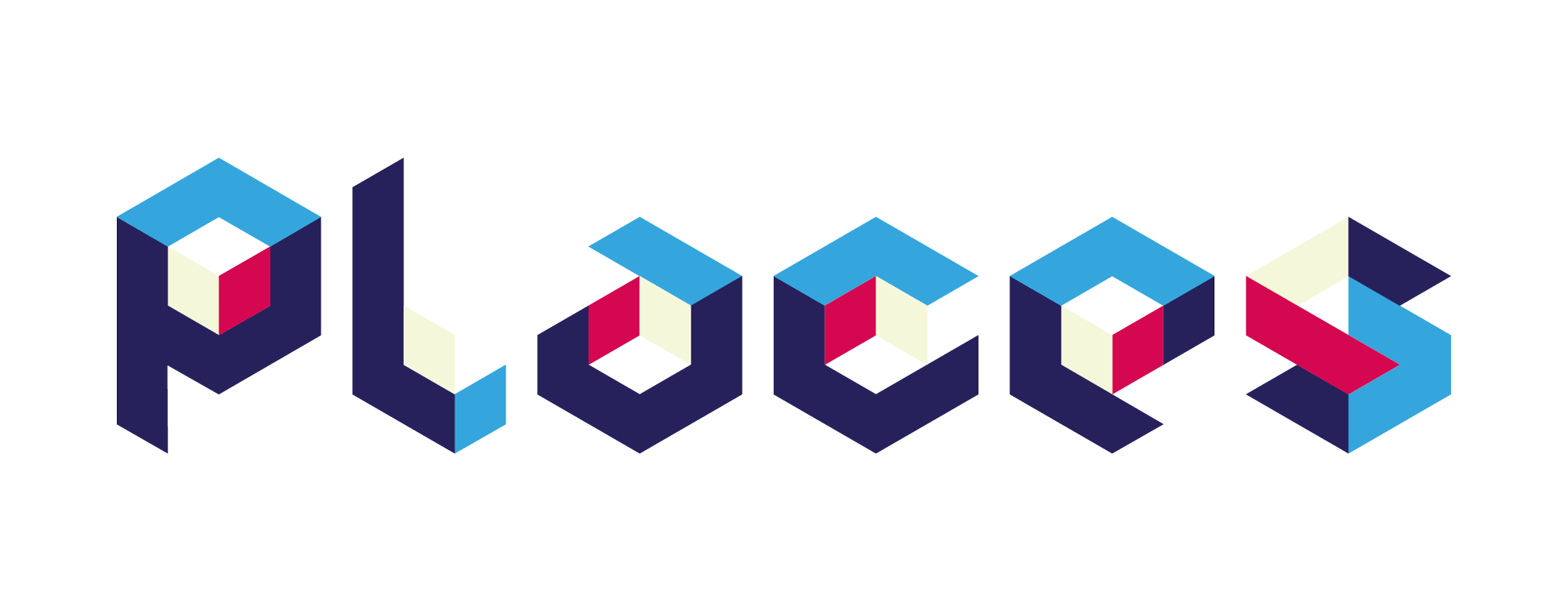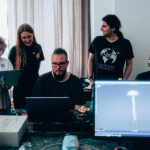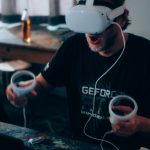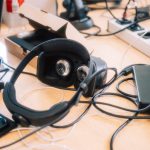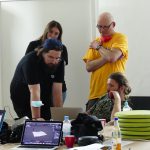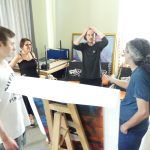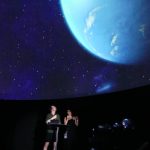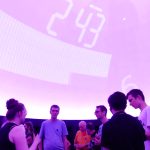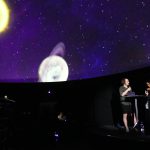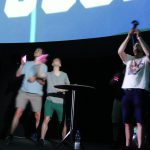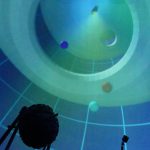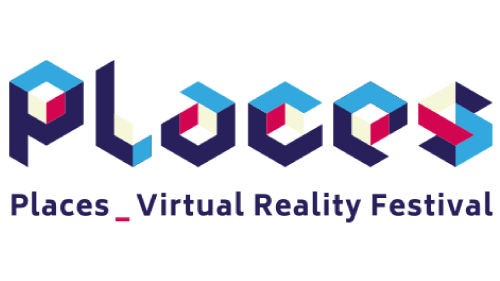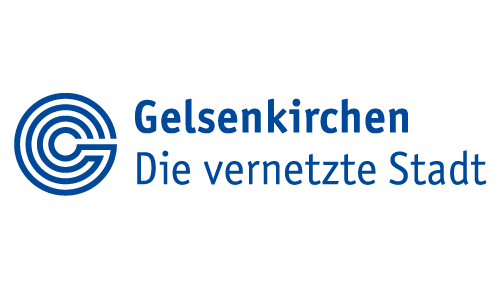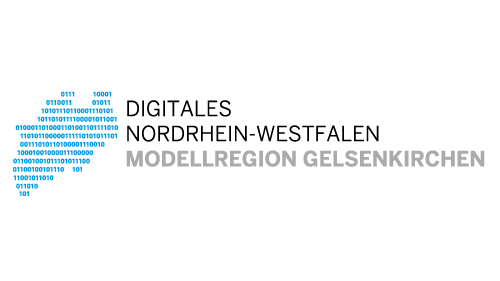[Review] Immersive Hackathon 2022
After the successful start last fall, the Immersive Hackathon took place for the second time last weekend – this time under the motto “Metaversed”. From June 17-18, twenty XR developers and planetarium enthusiasts had the chance to tinker, develop, test and get creative for a whole night.
The teams had 24 hours to organize themselves in their groups, to program a prototype and to prepare their presentation. By Friday afternoon, the participants had already gotten to know each other, pitched their individual ideas and visions, and formed teams. In the end, five teams between three and six members competed against each other.
At 3 p.m. on Saturday, it was the end of coding & the start of the jury tour in the premises of the Kunstmuseum Bochum, where the teams had locked themselves in with their technology for a night. The jury, consisting of Prof. Dr. Susanne Hüttemeister (Director Zeiss Planetarium Bochum), Laura Saenger Pacheco (VR specialist, director and fulldome enthusiast), Thomas Riedel (journalist & podcaster) and Prof. Dr. Detlef Gerhard (Chair of Digital Engineering at Ruhr University Bochum), evaluated the projects according to the five evaluation criteria: Potential, Creativity, Degree of Innovation, Quality Prototype, Presentation/Pitch.
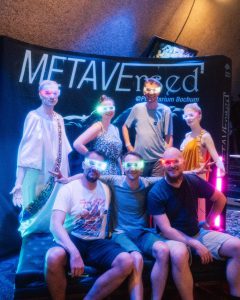
This year, however, not only the jury was allowed to give an evaluation. The 5-minute presentation in the dome in front of about 100 people counted with 50% weighting to the important hurdle. Digitally, the audience could vote for their favorite team.
Overall, both the jury and the audience were amazed at the quality of the presentations and prototypes in such a short time. The organizers from Zeiss Planetarium Bochum were also highly satisfied. The technical director Tobias Wiethoff praised the cooperation with Places: “Like last year, the Places team and mxr storytelling organized and executed the Immersive Hackathon with great attention to detail and a high level of professionalism. We can build on this result and target the 100th planetarium anniversary next year.”
The team form follows functions with their application Shape & Color won the 1st place and more than 2000 €. MetaView – Episode: Deep Sea won 1000 € on the 2nd place and Team SOULPLANET was happy about the 3rd place and 500 € prize money. But Team Wurmloch and Planet B did not have to go home without a prize either: the Freundeskreis Planetarium Bochum e.V. provided an additional 250 € per team.
We continue to work on how to unite the worlds of XR and Dome – for this purpose, a Discord channel was created during the Immersive Hackathon, to which all interested parties are cordially invited.
MetaView - Episode: Deep Sea
Finn Lichtenberg | visual coder / 3D artist
Vesela Stanoeva | Storytelling / Sound Designer
Elisa Drache | 3D Artist / Grading Post Processing
Ali Hackalife | Sound Designer / 3D-Artist
Michael Cegielka | World Designer / Visual Coder
Short description of the project
Idea | Content
The META VIEW project, created in the last 24 hours, is a new way to bring the metaverse into the planetarium. The Head Mounted Display is used as an immersive and interactive presentation tool to play on the dome. This allows the tour guide and audience to immerse themselves in a metaverse together.
In the first episode, we swim amidst particles that we can easily perceive. We are in dimensions we can’t imagine to tell stories about what is real, what is possible, and what it might mean to live underwater.
How was what used?
Hardware | Software
We implemented the modeling of the 3D objects in Blender and textured it in Substance Painter, again beaconing it in Blender. From there, the pipeline went into Unreal Engine for the final shading, including animated effects. We also generated the interactions in the engine. Then post processing gave the final touches. The presenter uses a head-mounted display (HTC-Vive) to guide the audience through the metaverse. The audience is located in a bubble in the metaverse and can be taken in any direction.
Wormhole - A LIVE view into another universe
Michael Koch | Planetarium, FFmpeg
Maks Hytra | Augmented Reality – SparkAR
Raphael Ntumba | Ideation
Viktor Waal | Augmented Reality, Pitch
Short description of the project
Idea | Content
A wormhole is inserted into a 360° background video. A wormhole is a hypothetical connection of our space to another point in space, to another time in the past or future or to a completely different universe. We do not know if wormholes really exist. In any case, they do not contradict the laws of physics. In our simulation the content of the
In our simulation, the content of the other end of the wormhole comes in real time from a 360° camera, which means that the visitors of the planetarium can interactively see themselves in the wormhole. In the second part, a wormhole is implemented as an Instagram filter for smartphone AR via SparkAR and made available for users to try out on their own smartphones.
How was what used?
Hardware | Software
Windows PC with Ricoh Theta 360° camera,
FFmpeg script,
Smartphone AR via SparkAR as Instagram filter
Planet B
Damian T. Dziwis | composition, media art, immersive media engineer
Rita Below | communication design, 3D design, programming
Alexander Filuk | cross platform, app, web and game development, sensor based interaction
Short description of the project
Idea | Content
Planet B – the Plan B Planet of the Planetarium Bochum. An immersive alien planet with audiovisual elements, generated by an artificial intelligence. Planet B invites to a digital encounter on a web-based virtual platform, which is not limited to the Planetarium Bochum with its 360° videosound audio performance, but also connects the audience on site as well as people from all over the world in a metaverse. Through VR and AR systems, visitors:inside can create the planet together and breathe life into audiovisual objects through exclusive control in the planetarium.
How was what used?
Hardware | Software
Rendering computer, dome projection,
Ambisonics-3D audio playback, Metaverse
Web server, VR/AR/Mobile compatible,
Mobilejoypad.com, TH Cologne IVES – Rendering
engine, Blender, generative evolutionary
AI networks
SOULPLANET
Julian Bringezu
Sören Stölting
Olena Ronzhes
Jewgeni „Jeff“ Birkhoff
Imad el Khechen
Steffen Junginger
Short description of the project
Idea | Content
Planets have souls. They pulsate alive or drift seemingly dead through the endless black. Their surfaces are fluid or yet fissured and riddled with scars.
They have unique personalities, just like us. Our vision: In the future, everyone at the Planetarium Bochum will have the opportunity to discover, visualize and share their unique personality in the form of a planet using our application. Psychological questions and answers stimulate visual characteristics of the planet.
How was what used?
Hardware | Software
Domemaster
Unity
Nuendo
Shape & Color
by form follows functions
Michel Görzen | Elektrotechnik + Mikrokontroller
Cora Braun | Planetarium + Immersive Medien
Manno Ludzuweit | VR-Development + Planetarium
Joris Willrodt | VR-Development + Planetarium
Oliver Werner | Immersive Medien
Short description of the project
Idea | Content
Shape & Color is an interactive planetarium experience in which the audience has to solve small puzzles together. While they are trapped in a futuristic synthwave tube, discs with differently positioned holes fall down on them. Using trackers passed around the audience area, virtual objects on the dome can be controlled and navigated through the holes. Points can be earned for each object successfully navigated through one of the holes. The higher the score, the higher the group’s ranking in the Hall of Fame. The goal of the application is to create a shared reality in which all audience members can participate with small interactions.
How was what used?
Hardware | Software
Hardware: 4 Lighthouses 2.0; 4 HTC Vive Trackers 3.0; Valve Index VR goggles (only passive in sleep mode)
Software: Unity 2021.4.3.f; SteamVR; Blender; Affinity Designer.
The trackers can be moved within the tracking area of the Lighthouses; moving the trackers is the only input option for the audience to make the usability of the application as simple as possible. Using Unity and Steam VR, the tracking data is processed and the virtual environment is projected onto the dome as DomeView.
